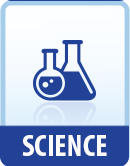|
This section contains 350 words (approx. 2 pages at 300 words per page) |
World of Biology on Mahlon Bush Hoagland
Mahlon Hoagland is best known for discovering, in the 1950s, that ribonucleic acid (RNA) molecules in the cytoplasm retrieve specific amino acids and take them to the ribosomes for assembly into proteins.
Hoagland was born in Boston, the son of Hudson Hoagland (1899-1983), the American physiologist who co-founded the Worcester foundation for Experimental Biology with Gregory Pincus. Mahlon Hoagland received his M.D. in 1948 from Harvard Medical School, and served on the bacteriology department faculty from 1953 through 1967.
In the 1950s scientists had already determined that messenger RNA carried instructions for protein production from codons, triplets of base pairs on deoxyribonucleic acid (DNA), from a cell's nucleus into the cytoplasm. There, RNA-rich ribosomes somehow used the information to assemble amino acids into proteins. American biochemist Paul Berg had already determined that the amino acids were activated by combining with adenosine triphosphate (ATP), but it was not known how the amino acids recognized the anticodons, or the complimentary RNA triplets that carried their code.
Hoagland and his associates accidentally discovered that the amino acids first attached themselves not to the RNA in the ribosomes, but to specific locations on small molecules of what had been called soluble RNA. Hoagland theorized that these molecules, whose name soon became transfer RNA, were complementary to the ribosomal RNA, where the amino acids were then attached. Although he was unaware of it at the time, Hoagland's discovery fit a theory of Francis Crick, the co-discoverer of the DNA double helix, that the amino acids attached to an adaptor RNA molecule that is complementary to the ribosomal RNA. Both theories were proven to be correct.
Transfer RNA was also discovered independently by Paul Berg and by Robert Holley.
Hoagland's other work has included determining the cancer-causing properties of beryllium, biosynthesizing coenzyme A (which is required for cell metabolism), and studies of liver regeneration, growth control, and amino acid activation of protein synthesis.
In 1967 he joined the biochemistry faculty at Dartmouth Medical School, and also became president of the Worcester Foundation for Experimental Biology. He is a member of the U.S. National Academy of Sciences.
|
This section contains 350 words (approx. 2 pages at 300 words per page) |


